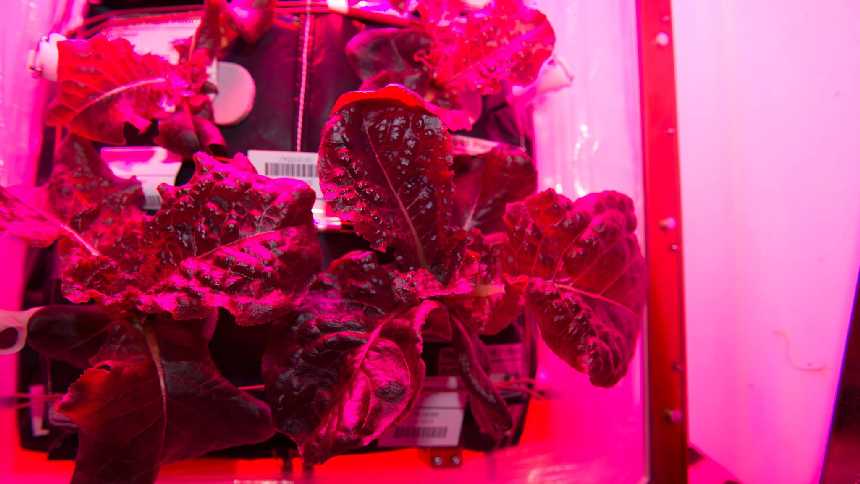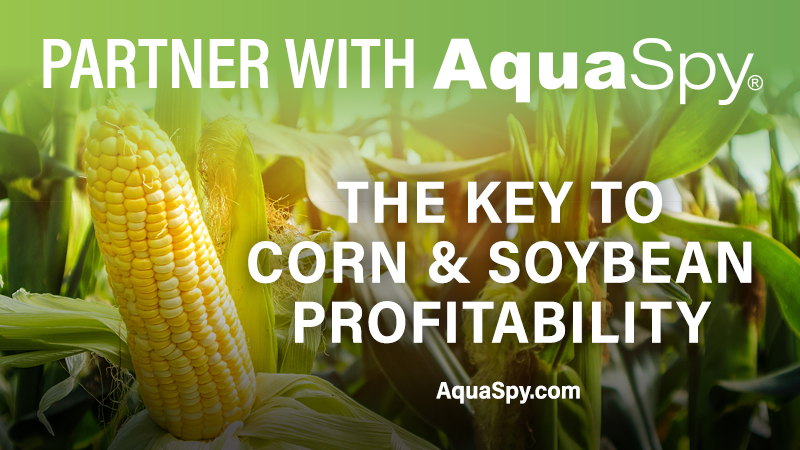Astronauts Eat Lettuce Grown In Space

“Outredgeous” red romaine lettuce from the Veggie Plant Growth System.
Photo courtesy of NASA
Fresh food grown in the microgravity environment of space officially is on the menu for the first time for NASA astronauts on the International Space Station. Expedition 44 crew members, including NASA’s one-year astronaut Scott Kelly, sampled the fruits of their labor after harvesting a crop of “Outredgeous” red romaine lettuce Monday, Aug. 10, from the “Veggie” plant growth system on the nation’s orbiting laboratory.
The astronauts cleaned the leafy greens with citric acid-based food safe sanitizing wipes before consuming them. They will eat half of the space bounty, setting aside the other half to be packaged and frozen on the station until it can be returned to Earth for scientific analysis.
NASA’s plant experiment, called Veg-01, is being used to study the in-orbit function and performance of the plant growth facility and its rooting “pillows,” which contain the seeds.
NASA is maturing Veggie technology aboard the space station to provide future pioneers with a sustainable food supplement — a critical part of NASA’s Journey to Mars. As NASA moves toward long-duration exploration missions farther into the solar system, Veggie will be a resource for crew food growth and consumption. It also could be used by astronauts for recreational gardening activities during deep space missions.
The first pillows were activated, watered and cared for by Expedition 39 flight engineer Steve Swanson in May 2014. After 33 days of growth, the plants were harvested and returned to Earth in October 2014. At NASA’s Kennedy Space Center in Florida, the plants underwent food safety analysis. The second Veg-01 plant pillows were activated by Kelly on July 8 and grew again for 33 days before being harvested. The seeds had been on the station for 15 months before being activated.
The Veggie system was developed by Orbital Technologies Corp. (ORBITEC) in Madison, WI, and tested at Kennedy before flight. Veggie, along with two sets of pillows containing the romaine seeds and one set of zinnias, was delivered to the station on the third cargo resupply mission by SpaceX in April 2014.
The collapsible and expandable Veggie unit features a flat panel light bank that includes red, blue, and green LEDs for plant growth and crew observation. Using LED lights to grow plants was an idea that originated with NASA as far back as the late 1990s, according to Ray Wheeler, lead researcher for Advanced Life Support activities in the Exploration Research and Technology Programs Office at Kennedy.
Wheeler worked with engineers and collaborators to help develop the Veggie unit from a Small Business Innovative Research project with ORBITEC. Gioia Massa is the NASA payload scientist for Veggie at Kennedy. Massa and others worked to get the flight unit developed and certified for use on the space station. The purple/pinkish hue surrounding the plants in Veggie is the result of a combination of the red and blue lights, which by design emit more light than the green LEDs. Green LEDS were added so the plants look like edible food rather than weird purple plants.
“Blue and red wavelengths are the minimum needed to get good plant growth,” Wheeler said. “They are probably the most efficient in terms of electrical power conversion. The green LEDs help to enhance the human visual perception of the plants, but they don’t put out as much light as the reds and blues.”
Wheeler, Massa and Gary Stutte, all from Kennedy, previously investigated similar experiments to grow plants in the Habitat Demonstration Unit at NASA’s desert test site near Flagstaff, AZ, in 2010 and 2011. Wheeler said Veggie will help NASA learn more about growing plants in controlled environment agriculture settings. Similar settings include vertical agriculture, which refers to stacking up shelves of plants that are grown hydroponically and then using electric light sources like red and blue LEDs. This kind of system is popular in some Asian countries and beginning to grow in the U.S.
“There is evidence that supports fresh foods, such as tomatoes, blueberries and red lettuce are a good source of antioxidants. Having fresh food like these available in space could have a positive impact on people’s moods and also could provide some protection against radiation in space,” Wheeler said.
Click here for more information.
Source: NASA










